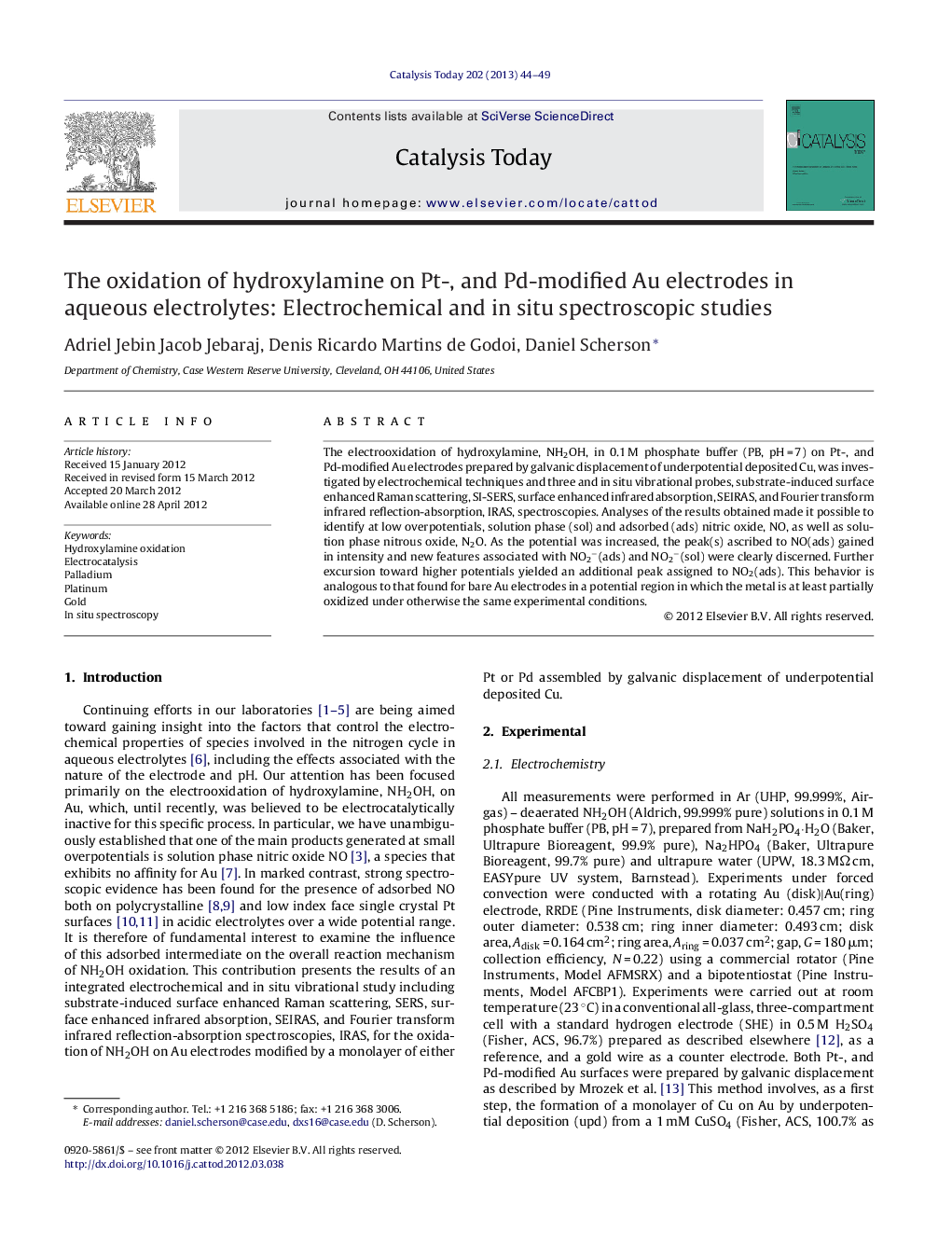| Article ID | Journal | Published Year | Pages | File Type |
|---|---|---|---|---|
| 54994 | Catalysis Today | 2013 | 6 Pages |
The electrooxidation of hydroxylamine, NH2OH, in 0.1 M phosphate buffer (PB, pH = 7) on Pt-, and Pd-modified Au electrodes prepared by galvanic displacement of underpotential deposited Cu, was investigated by electrochemical techniques and three and in situ vibrational probes, substrate-induced surface enhanced Raman scattering, SI-SERS, surface enhanced infrared absorption, SEIRAS, and Fourier transform infrared reflection-absorption, IRAS, spectroscopies. Analyses of the results obtained made it possible to identify at low overpotentials, solution phase (sol) and adsorbed (ads) nitric oxide, NO, as well as solution phase nitrous oxide, N2O. As the potential was increased, the peak(s) ascribed to NO(ads) gained in intensity and new features associated with NO2−(ads) and NO2−(sol) were clearly discerned. Further excursion toward higher potentials yielded an additional peak assigned to NO2(ads). This behavior is analogous to that found for bare Au electrodes in a potential region in which the metal is at least partially oxidized under otherwise the same experimental conditions.
Graphical abstractFigure optionsDownload full-size imageDownload high-quality image (171 K)Download as PowerPoint slideHighlights► Electrooxidation of NH2OH on Pt- and Pd-modified Au in pH 7 yields at low potentials, NO and N2O in solution, and adsorbed NO. ► In situ surface enhanced infrared spectroscopy showed a feature ascribed to adsorbed NO. ► In situ surface enhanced Raman scattering displayed features assigned to adsorbed nitrite. ► In situ reflection absorption infrared showed a peak attributed to solution phase nitrite. ► In situ surface enhanced Raman yielded at higher potentials a feature attributed to adsorbed NO2.
